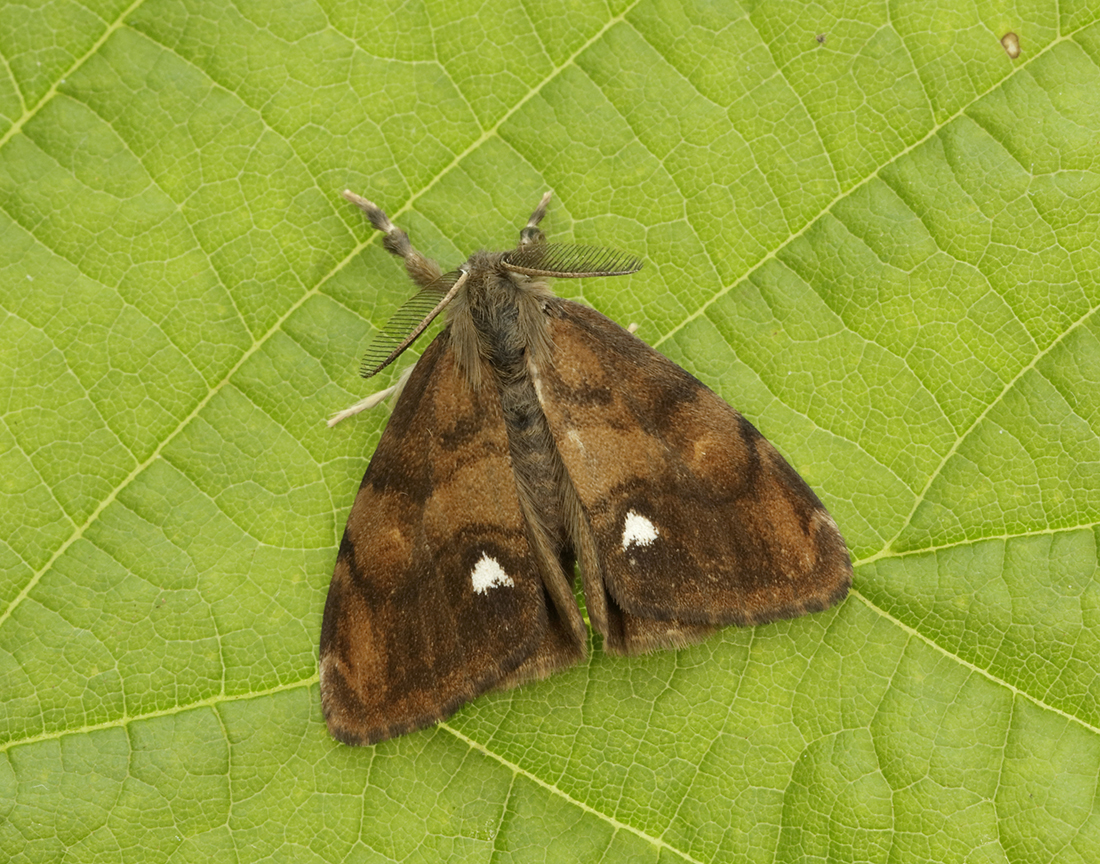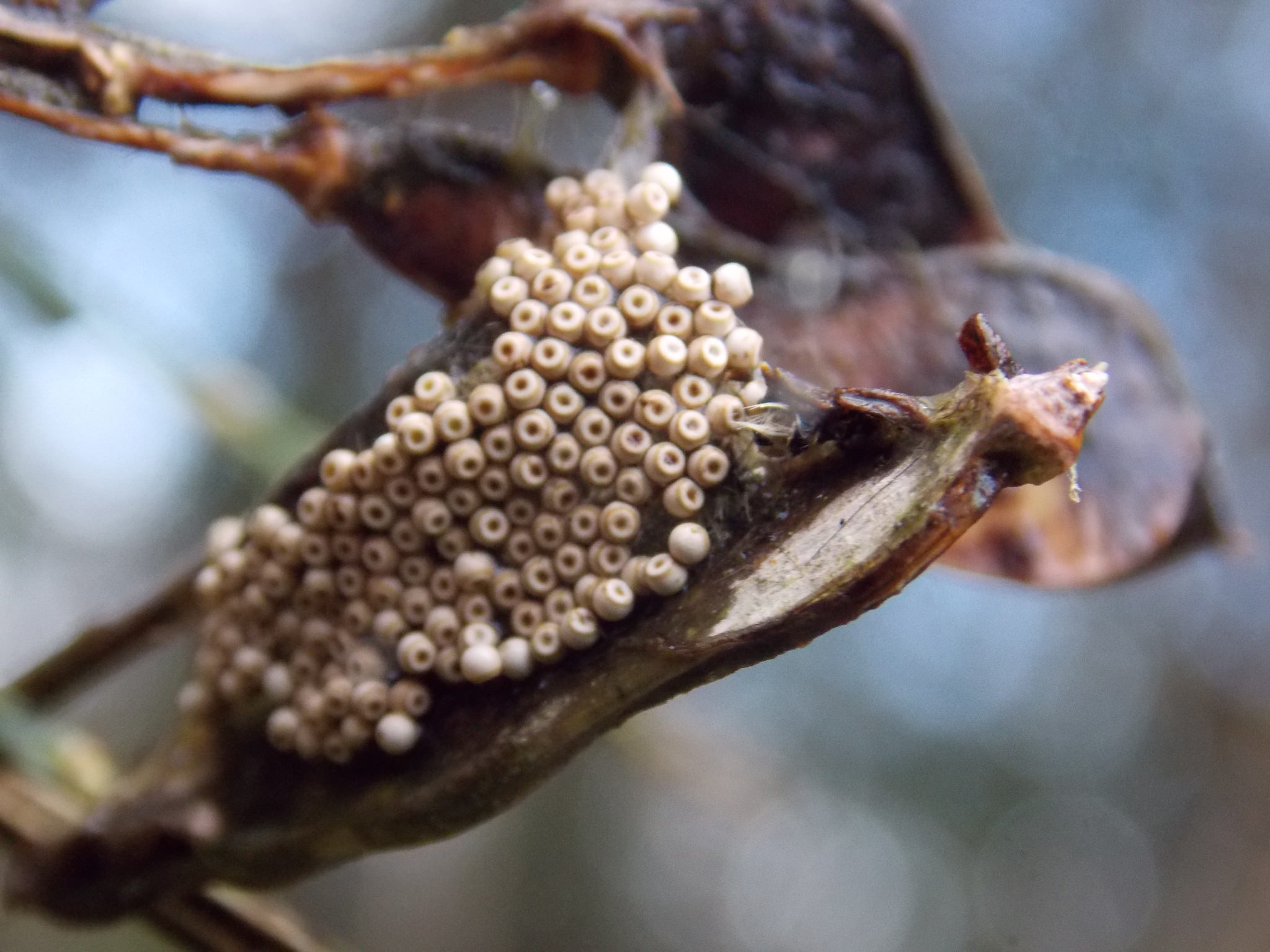Identification
Male is unmistakable. Female is wingless (apterous).
Life cycle
One generation. Overwinters as an egg. Larvae are present May to early September.
Larval foodplants
Most broadleaved trees that are native.
Habitat
Open woodland, heathland, moorland, gardens and parks.
History 1860-2010
Somerville (1858) had found the larvae whilst on a visit to the Moffat area in August of that year on birch and had bred it on. Lennon (1863) stated that it was common everywhere. Douglas Robinson (1870-71) had also found the larvae abundant in July and August on Almorness where he lived, with the imago out in September. Gordon (1913) had found it fairly common on all the moors around Corsemalzie, Wigtownshire, and also at Garheugh Rocks on the Luce Bay, late September 1898. In mid-August 1895 he had found the larvae plentiful on bracken on Low Quhillart Moor, Corsemalzie. MOGBI, however, had no record of it occurring in VC74.
Cunningham (1950) had a record from Mabie Forest on 22nd August 1949. A handful of records from the early 1970s followed, Cairnsmore of Fleet, Gatehouse of Fleet, Silver Flowe, Loch Stroan and Glentrool being the sites. In the second half of that decade it was found near Gretna (VC72).
From 1992 to 2010 most of the twenty records came from Dumfriesshire, with seven from Kirkcudbrightshire and a single from Wigtownshire at Torrs Warren.













